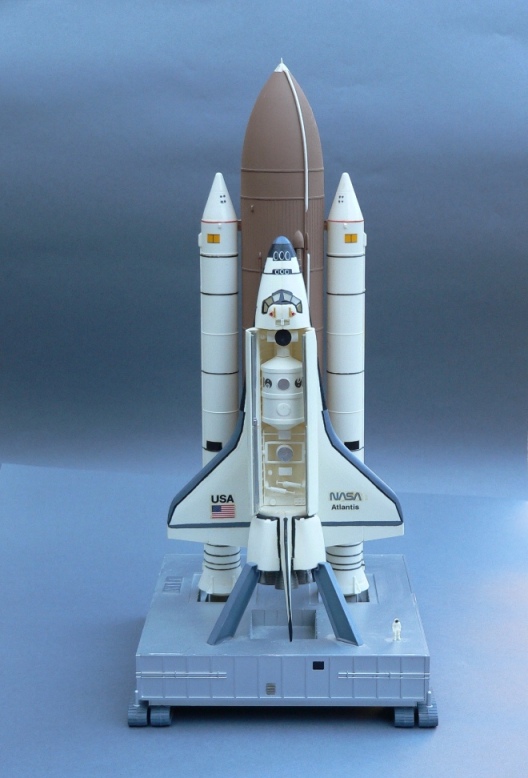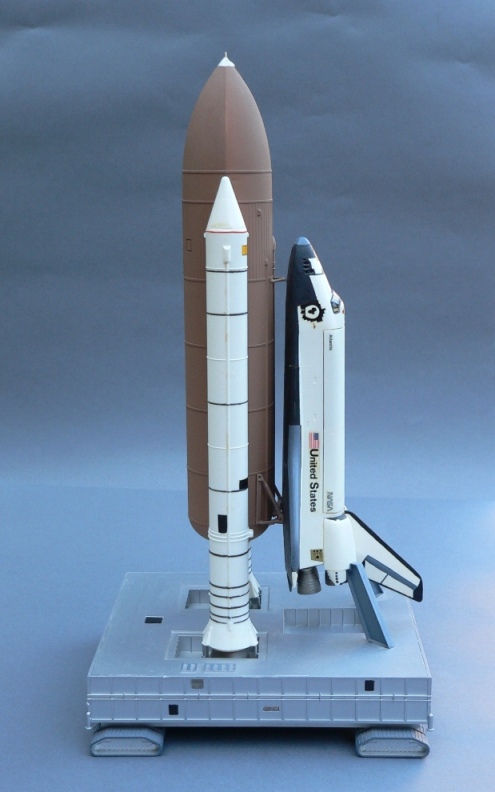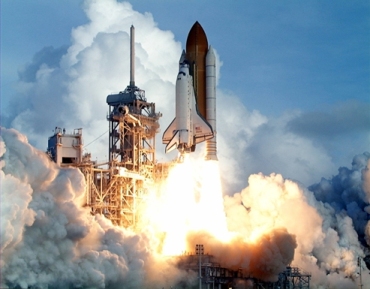

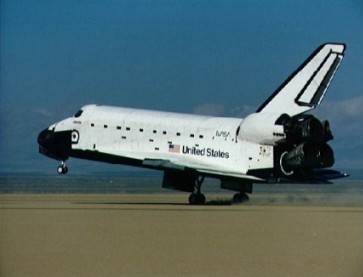



A total of six space shuttle orbiters were built: Enterprise, Columbia, Challenger, Discovery, Atlantis and Endeavour. Atlantis (Orbiter Vehicle Designation: OV-104) was the last operational orbiter in the Space Shuttle fleet of NASA, the space agency of the United States. Enterprise was used for flight tests but was never flown in space. Challenger and Columbia were both lost in accidents.
Atlantis was the fourth operational space shuttle built and was delivered to Kennedy Space Center in April 1985. In early 2008, NASA officials decided to keep Atlantis flying until 2010, the projected end of the shuttle program and this was later extended to 2011. This reversed a previous decision to retire Atlantis in 2008.
Atlantis, like all space shuttles consists of three major components: the orbiter which houses the crew and payload; a large external fuel tank that holds fuel for the main engines; and two solid rocket boosters (SRBs) which provide most of the shuttle's lift during the first two minutes of flight. All of the components are reused except for the external fuel tank, which burns up in the atmosphere after each launch.
Space Shuttle Atlantis lifted off on its maiden voyage on October 3, 1985, on mission STS-51-J, the second dedicated Department of Defense flight. After its final flight in July, 2011, Atlantis will have flown 33 missions.
Orbiter Maintenance Down Periods:
To date Atlantis has gone through two overhauls of scheduled Orbiter Maintenance Down Periods (OMDPs) during her operational history. Atlantis arrived at Palmdale, California in October 1992 for OMDP-1. During that visit 165 modifications were made over the next 20 months. These included the installation of a drag chute, new plumbing lines to configure the orbiter for extended duration, more than 800 new heat tiles and blankets and new insulation for main landing gear and structural mods to the airframe. On November 5, 1997, Atlantis again arrived at Palmdale for OMDP-2 which was completed on September 24, 1998. The 130 modifications carried out during OMDP-2 included glass cockpit displays, replacement of TACAN navigation with GPS and ISS airlock and docking installation. Several weight reduction modifications were also performed on the orbiter including replacement of Advanced Flexible Reusable Surface Insulation (AFRSI) insulation blankets on upper surfaces with FRSI. Moreover lightweight crew seats were installed and the Extended Duration Orbiter (EDO) package installed on OMDP-1 was removed to lighten Atlantis to better serve its prime mission of servicing the International Space Station.
Decommissioning:
NASA had planned to withdraw Atlantis from service in 2008, as the orbiter would have been due to undergo its third scheduled OMDP. Because of the planned final retirement of the shuttle fleet in 2010, this was deemed uneconomic. It was planned that Atlantis would be kept in near flight condition to be used as a parts hulk for Discovery and Endeavour. However, with the planned flight schedule extended to 2011, the decision was taken to extend the time between OMDPs, allowing Atlantis to be retained for operations. After 135 flights in 30 years, the final flight of Atlantis on July 8, 2011 marked the end of the Space Shuttle era. All three Space Shuttles will be put on display in three different museums in the U.S.
Facts and General Characteristics of Space Shuttle Atlantis:
Name: Named after a two-masted sailing ship that operated from 1930 to 1966 for the Woods Hole Oceanographic Institute.
Contract awarded to Rockwell International: January 29, 1979.
Construction: March 30, 1980 – April 10, 1984.
Length: Space Shuttle: 56.14 meters (184.2 feet), Orbiter: 37.23 meters (122.17 feet)
Height: Orbiter on runway: 17.27 meters (56.67 feet)
Wingspan: 23.79 meters (78.06 feet)
Weight: At liftoff: 2,041,166 kilograms (4.5 million pounds), End of mission: 104,326 kilograms (230,000 pounds). Weight will vary depending on payloads and on board consumables.
Maximum cargo to orbit: 28,802 kilograms (63,500 pounds)
SRB separation: 2 minutes after launch
External tank separation: 8.5 minutes after launch at109.26 kilometers (59 nautical miles) altitude and 28,067 kph (17,440 mph) velocity
Orbit altitude: 185 to 643 kilometers (115 to 400 statute miles)
Orbit velocity: 27,875 kph (17,321 mph)
Crew: 5 - 7
Average cost/mission: Approximately $450,000,000
The Model:
The model includes the Space Shuttle Atlantis mounted on the mobile launch platform and crawler which was originally built to transport and launch the Saturn moon rockets. It also includes an astronaut for scale comparison. The bay doors of the Atlantis open to reveal a robotic arm and a European Space Agency satellite.
Facts and General Characteristics of the Model:
Manufacturer: Revell AG Germany
Scale: 1/444
Height (shuttle and mobile launch platform): 17.2"
Width (mobile launch platform): 8.3"
Hours to build and paint: 15
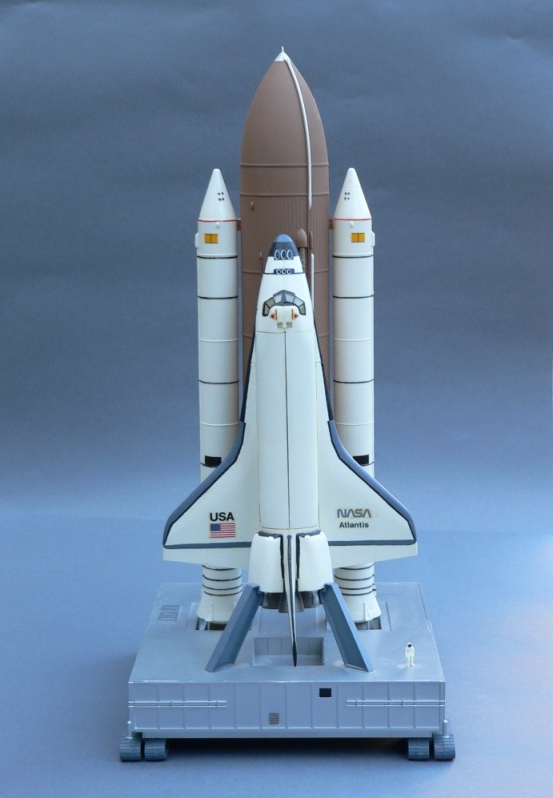
Bay doors open:
